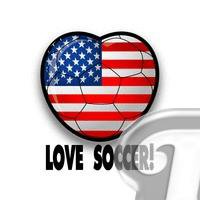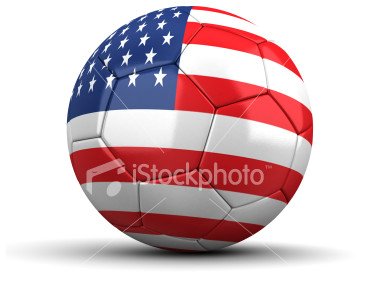An Overview of American Soccer History

The College Era, and Rules Consolidation, 1862-1875
The Working-Class and Immigrant Eras, 1875-1894
The First Dynasties, 1913-1921
The 1960's: The Birth of the American Soccer Renaissance
Outdoor soccer reaches a low: 1985
The Rebirth of Outdoor Soccer, 1988-1994
1994: The World Cup comes to America
From World Cup to Major League Soccer (1995-1996)

Outdoor soccer reaches a low: 1985
The mid 1980s were a gloomy time for outdoor soccer in the US. With the demise of the NASL in 1984, and the abrupt end of the United Soccer League in 1985, only the Western Soccer League, which had just finished its first season, remained playing outdoor soccer, with four surviving teams. The best chance for the sport to flourish in the United States had gone up in a sea of red ink and failed dreams with the demise of the NASL, yet the seeds had been planted for future growth. Many fans had gotten their first taste of first-rate pro soccer and wanted more. The surprisingly large crowd at soccer matches in the 1984 Olympics held at Los Angeles, despite the almost total lack of media coverage, showed that a large market existed for soccer as a spectator sport. Another important event, which went almost unnoticed at the time was the inauguration of the Women's National Team in 1985, which started on a very modest scale, but would steadily rise to gain world attention by the end of the 1990's.
Youth soccer had gained a firm foothold in mainstream America, and the youth game was growing by leaps and bounds. Spearheaded by national organizations such as the United States Youth Soccer Association and the American Youth Soccer Organization, soccer participation skyrocketed, soon eclipsing all but the most established sports in youth participation. This was partially due to accessibility and lack of expenses. Soccer did not require great strength or size, and the outlay for equipment and uniforms was minimal compared to sports such as hockey and football. With two competing organizations (USYSA and AYSO), options were available both for people who preferred a more recreational game (AYSO) and those who preferred a more competitive situation (USYSA). Many parents who had gotten their first taste of the game at NASL matches saw soccer as a viable vocation for their children, and the growth of the youth game has continued to this day. For the future, many children who first attended soccer at NASL matches are now eager fans of MLS, and active participants in local soccer programs as parents or coaches.
For much of the 1980's, the indoor game was the main event. The MISL benefited from a large infusion of talent as highly talented players joined from the NASL, several of whom became preeminent players throughout the decade. Gary Etherington, Steve Zungul, Keith Furphy, Dale Mitchell, Juli Veee, Jim McAlister, Alan Willey, Steve David, Clyde Best, Paul Child, and Karl-Heinz Granitza among others continued their careers well into the 1980;s with the MISL. In addition, Dave Brcic, Rick Davis, Ty Keough, Hugo Perez, Fernando Clavijo, and Frank Klopas combined their starring roles in the indoor game with stints on the US National team. Several stars of the 1990's and the MLS got their start in the MISL, including Preki, Cle Kooiman, Peter Vermes, Hector Marinaro (NPSL), Ted Eck, Chad Ashton, Goran Hunjak, Iain Fraser, and Shawn Medved.
The rivalry between the MISL and the AISA heated up in the 1980's once these two leagues were clearly established as the primary professional leagues in the US. By now, all existing outdoor leagues (The Western Soccer League and the Lone Star Soccer Alliance, formed in 1987) were operating at a basically semi-pro level, and all the top stars were indoors.